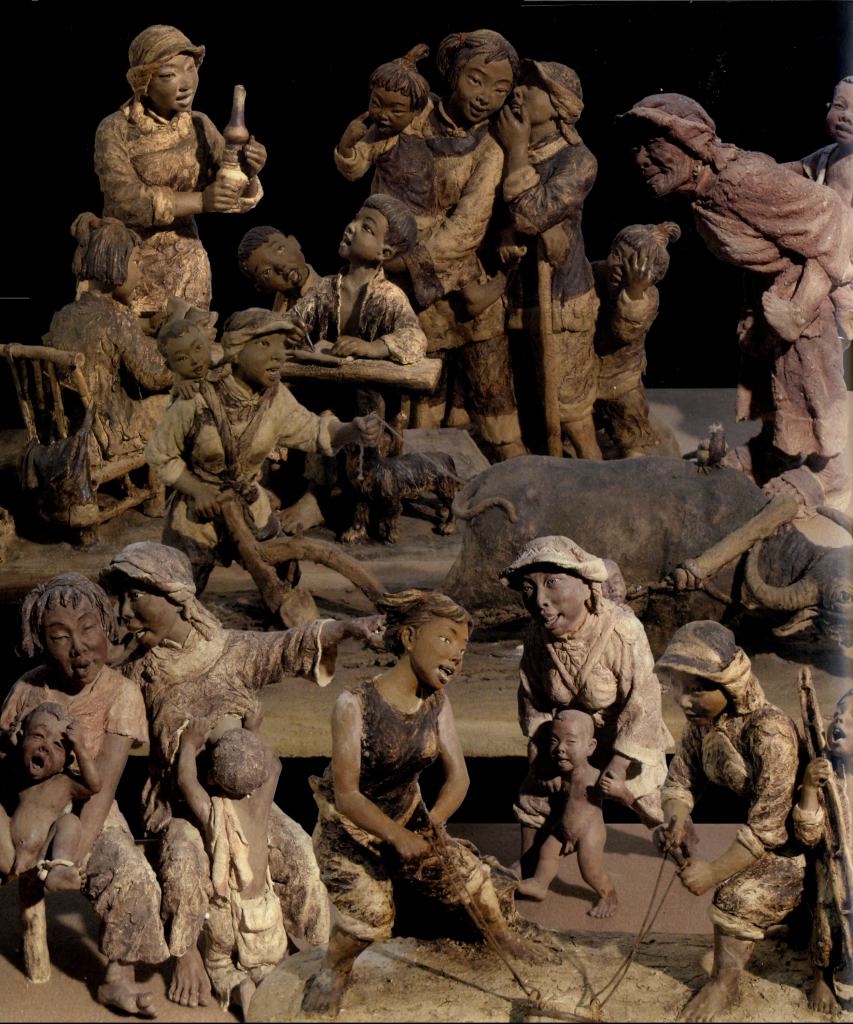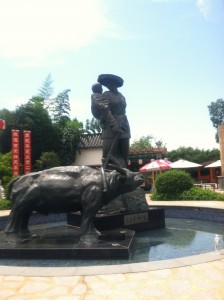“Unbound: Empowerment Among Hakka Women in Jamaica, Indonesia, Germany and Mauritius”
Watson Fellowship 2015-2016

I started my Watson year with asking myself: How do contemporary transnational Chinese women experience and challenge arranged marriage in relation to other social issues, such as race, religion or income? Over the year, my questions evolved and refocused as I collected narratives and stories among six different Hakka communities.
The Hakka are an ethnicity within the Han ethnic group and are known for having traveled and settled in various countries where there were few overseas Chinese. These communities are known for being particularly insular, thus impacting marital decision-making as communities seek to maintain and define identity. As a Hakka woman myself, I had seen how marriages had been arranged to reinforce family, history and power.
I lived in Austria, Indonesia, Malaysia and Mauritius. These countries each have significant Hakka-Chinese populations, each with varying attitudes toward women’s roles and arranged marriages. These varying attitudes affect how girls and women consider or plan their education, work, family life and other aspects of their daily lives. As I built relationships with Chinese girls and women across borders, I collected a network of stories of lived experiences. Their perspectives nuanced my understanding of different feminisms, challenging what many Western-educated women (myself included) believe about feminism and approaches to empowerment.
“Classroom to Cash Register: Family-owned Ethnic Restaurants and the Children Who Grow up in Them”
April 2015
Anthropology Honors Thesis//Awarded High Honors
Presented at Southern Anthropological Society Conference 2015//Honorable Mention

Abstract: Seattle’s Chinatown has been deemed a “mature” Chinese community in the United States. Idealizations of Seattle’s Chinatown as a beacon of performing Chinese identity, however, threaten one’s understanding of the multiplicity of Chinese-American identities in the US. Fieldwork in Seattle’s Chinatown in combination with narratives from other Chinese-Americans around the US reveals the lived experiences of working class Chinese-Americans. In particular, I focus on children and young adults who grow up in Chinese-American restaurants and find themselves particularly caught in a liminal space.
While Chinese-American food has become a mainstream staple cuisine, restaurant families find themselves performing their ethnicity, often times reaffirming the American imagination of Chinese identity. Furthermore, restaurant children find themselves conflicted between achieving the American Dream of success—going to college and owning a suburban home—and maintaining identities through continuing restaurant legacies. Ultimately, a very homogenizing and totalizing image is imposed upon Chinese-Americans, regardless of their socioeconomic status. Geographic, linguistic and class divides make it difficult to articulate a collective voice for Chinese-Americans across the United States.
KEYWORDS: Chinese-American, restaurants, ethnicity
“Burning Marilyn Monroe’s Face: Forging Transnational Identities Through Ritual Burning”
December 2014
Anthropology Senior Colloquium Paper

Abstract: While religion and ideology incentivize the transmission of tradition, objects serve as vehicles for adaptation and connection to past worlds. However, due to the lack of access to ritual objects, communities are left to continue traditions with the materials available. Thus, new traditions, practices and rituals emerge as transnational Chinese communities engage with their material environment to continue participating in ancestral veneration practices, and moreover, changing the face of Chinese religion.
“It’s All Written by Men”: Hakka Women, Feminist Myths and Retelling Identity
April 2014
Presented at the 2014 Association for Asian Studies Conference
Abstract: Ranging from their opposition to foot-binding to accounts of Mongol soldiers fleeing from them as they picked firewood, Hakka women have been projected as being independent, loyal, hardworking and liberated in comparison to other Chinese women. While the discourse concerning Hakka women is a major facet of Hakka identity, Hakka men have maintained a stronger grasp on this discourse, in which women are portrayed as idyllic symbols. Despite what texts have to say, Hakka women are arguably objectified as artifacts of the public memory. Many households continue to deny Hakka women both recognition and the power to define and represent themselves.
Based on participant observation and interviews conducted in Meizhou City, I have observed that many young Hakka women are aware of and incensed by the gender inequality between Hakka men and women. As a result, young women find alternative ways to manifest their agency through a combination of locally-influenced and Western-influenced feminist ideologies. In doing so, younger generations of women maintain a strong sense of Hakka identity and continue to see themselves playing a role in Hakka culture and society, but with greater command and agency over their own history.
“Historical Trauma and Cultural Discontinuity in the Hakka Diaspora: The 1962 Internment of Indian Hakka and the Barriers to Political Mobilization”
December 6-10, 2012
Presented at “Hakka Cultural Diversity and Theory in Hakka Studies” conference at Jiaying College Meizhou Prefecture, Guangdong Province
During the 1962 border conflict between China and India, nearly three thousand Indian Chinese accused of being Communist sympathizers (many of whom were Hakka) were incarcerated in the Deoli Internment Camp in Rajasthan. Almost fifty years after the trauma faced by the Hakka Indian community, ex-internees who migrated to Canada and the United States formed the Association of India Deoli Camp Internees 1962 (AIDCI). Members of the Hakka Indian community have become prominent leaders in the group, largely due to kinship ties among members. While the formation of AIDCI seems to indicate a positive step forward for the Hakka community in terms of resolving this historical trauma, AIDCI struggles with three major factors: geography, time, and space. Geography has become a challenge as AIDCI members struggle to mobilize the diasporic community. Time is a struggle as AIDCI members consist mostly of senior citizens who fear that they will pass on before they receive an apology from the Indian government. And space has become a subsequent challenge of the issue of geography; while the Canadian Hakka community has remained close and active, they struggle with carving out a political space in which they can amplify AIDCI’s impact.
Based on interviews with ex-internees, the Deoli Internment Camp literature, and Cheng’s personal involvement in AIDCI, this paper will explore how generational displacement has limited the Hakka Indian community’s ability to mobilize politically and resolve the legacy of historical trauma. Despite finally finding a space for political action, Hakka survivors of the Indian internment camp must overcome their lack of education, the differences that come with an “interethnic” organization, and difficulty in communicating with new, assimilated generations (the children of ex-internees).

